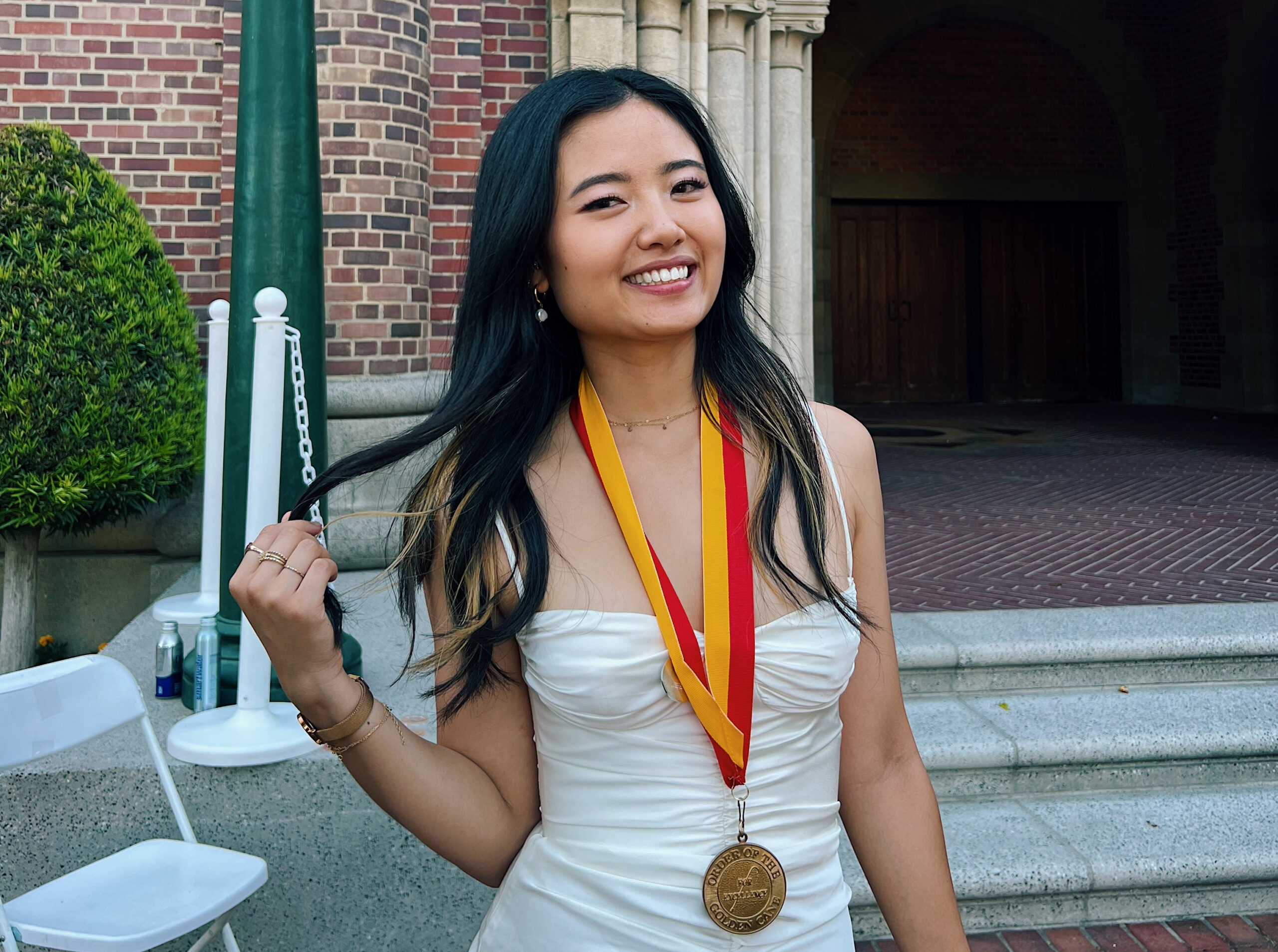01.25.2024
By uscbknpt
Movement is Medicine

Recent DPT graduate is helping ravers get their groove back.
BY MICHELLE McCARTHY
RAVES — UNDERGROUND DANCE PARTIES where DJs spin frenetic electronic beats — are no longer relegated to warehouses or clubs. Now they take place in tents and fields at day-long festivals, where attendees are free to dance for hours on end. While the movements appear smooth and seamless, over time, they can amount to high-impact cardio workouts and lead to a host of injuries.
A dancer herself, Joyce Ai DPT ’22 noticed the need for physical therapy geared toward this population and has tailored her work to the specific needs of ravers. “I’m a big believer that prevention is better than treatment,” she says. “Instead of having people do a specific exercise or stretch to prevent injuries, I promote adopting a healthy lifestyle — which consists of forming good habits, staying active, having a consistent training regimen and managing stress.”
Do you yourself attend raves?
Yes, I love live music, going to festivals and sharing the moment with my friends and thousands of strangers. Dance is one of the greatest forms of creative expression. It’s one of my favorite outlets — to be surrounded by good music, good people and good vibes. Three years ago, I learned how to shuffle, which is a specific form of dancing that is done to electronic dance music.
How did you become involved with this patient population?
I got involved through my involvement in the community. I couldn’t imagine how my life would look if I wasn’t able to attend these events, so I made it my mission to help others. I found there are a lot of dancers who are not training smart. They end up dancing with injuries, causing them to sit out at competitions, dance events and festivals. I also learned there was no one who specialized in treating shufflers, and thought I was in a unique position to help.
What are some considerations specific to this population?
The biggest consideration for festival-goers is the amount of time we spend on our feet. Festivals usually last two to three days, eight to 12 hours a day. Considering most people now live a somewhat sedentary lifestyle, going from sitting five days a week, nine hours a day to standing for 12 hours a day, multiple days at once, can be a drastic change and a recipe for injury. That’s why a big portion of what I promote is educating the population to become more active, because movement is medicine.
For shufflers, the biggest consideration is that they need to incorporate strength and mobility training into their routines. Most of them do not have a proper training regimen to help complement their dance routine, so that’s what I try to educate them on and a big part of what I do for this population.
What types of injuries do you see?
I mostly see lower extremity injuries, such as knee and ankle pain. People don’t necessarily injure themselves at raves, but they may have pre-existing injuries that don’t allow them to rave like they used to, such as disc herniations, lower-back pain and plantar fasciitis. They’re dismissed by their healthcare providers with the simple solution of, “Well, if it hurts to stand for long periods of time at festivals, then don’t go to festivals.” Telling them to not do what they love is like a death sentence that makes people lose parts of their identities. I simply don’t want to see that happen.
What are the ages of the patients you typically see?
Most of my clients are in their mid-20s to mid-30s. However, I wish to expand my clientele to middle-aged individuals, as I hope to be able to help them stay in shape so they can rave well into their later years.
How did your education at USC set you up for success?
USC provided me with a really strong foundation, specifically in musculoskeletal anatomy and biomechanics, which I was able to apply to shuffle dancers. The knowledge I gained allowed me to think outside the box and break down complex dance moves into components that I’m able to guide my clients through. They can gradually build up their tolerance to certain movements that were previously intolerable. Being surrounded by such intelligent and accomplished faculty was another motivation for me to step outside my comfort zone and explore my own definition of success.

